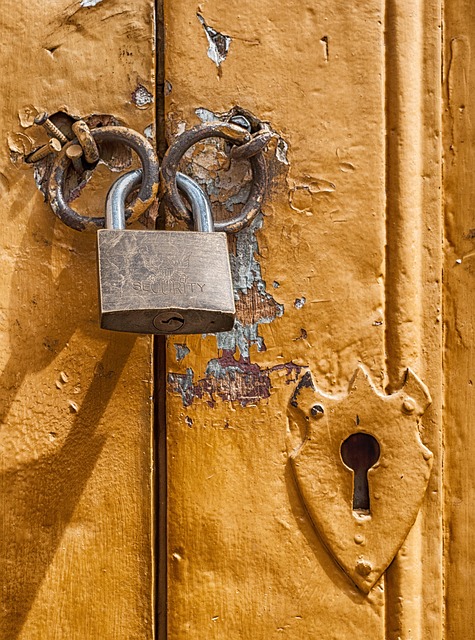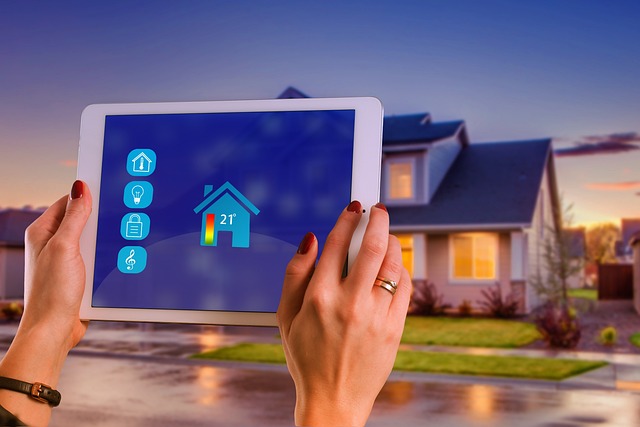Smart motion sensors for pets are a key technology for designing functional, aesthetically pleasing living spaces that cater to furry companions' unique needs. These sensors enable automated control of lighting, temperature, and security based on pet activity, promoting energy efficiency, convenience, and safety. By seamlessly integrating these features, homeowners can create inviting environments that balance style and practicality, enhancing the overall experience for both pets and humans.
In today’s pet-loving world, designing spaces that cater to both humans and animals requires a delicate balance. This article explores sleek, discreet design solutions tailored for pet-friendly environments. We delve into understanding these spaces, leveraging smart motion sensors for seamless integration, and crafting cohesive looks for common areas and sleep havens. Discover how technology meets aesthetics to create harmonious homes where pets thrive.
- Understanding Pet-Friendly Spaces: A Design Approach
- The Role of Smart Motion Sensors in Seamless Integration
- Discreet yet Effective: Design Solutions for Common Areas
- Creating a Cohesive Look: Bedrooms and Napping Areas for Pets
Understanding Pet-Friendly Spaces: A Design Approach

In designing pet-friendly spaces, understanding the unique needs and behaviors of our furry companions is paramount. These spaces, whether they are homes or public areas, must cater to the natural instincts and routines of pets while ensuring a harmonious blend with human living environments. One innovative approach involves integrating smart motion sensors for pets into furniture and fixtures. These sensors can detect when animals enter specific zones, allowing for automated adjustments in lighting, temperature, and even access control, thereby enhancing both pet comfort and human convenience.
By employing such technology, designers can create discreet yet effective solutions that accommodate pets’ movements and habits without compromising aesthetics. For instance, motion-activated feeders and water bowls not only encourage healthy hydration and feeding routines but do so in a way that keeps kitchens and living rooms tidy. Similarly, automated blinds or curtains can adapt to the presence of pets, providing them with safe areas for rest while maintaining a clean, modern design aesthetic.
The Role of Smart Motion Sensors in Seamless Integration

The role of smart motion sensors in pet-friendly spaces cannot be overstated. These innovative devices play a pivotal role in achieving seamless integration and ensuring a harmonious coexistence between pets and modern design. By employing smart motion sensors for pets, homeowners can create environments that are both aesthetically pleasing and functional. These sensors detect the presence of animals without disrupting the overall look and feel of the space, allowing for discreet monitoring and control of various functions like lighting, temperature, and security.
In pet-friendly spaces, smart motion sensors offer numerous benefits. They enable automated adjustments to lighting based on animal activity, preventing waste and enhancing energy efficiency. Additionally, these sensors can trigger specific actions when a pet enters or leaves a room, such as activating cameras for observation or engaging alerts for owners remotely. This technology not only promotes convenience but also contributes to a safer and more comfortable living environment for both pets and their human companions.
Discreet yet Effective: Design Solutions for Common Areas

In pet-friendly spaces, striking a balance between aesthetics and functionality is essential. Discreet design solutions that incorporate innovative technology can effectively manage common areas while maintaining an elegant look. Smart motion sensors for pets offer a subtle yet powerful tool to ensure safety and convenience. These sensors can automatically adjust lighting, trigger pet-friendly features like automatic food dispensers, or even monitor activity levels—all without compromising the overall design integrity of the space.
By integrating such technology seamlessly, homeowners can create environments that are both inviting for pets and aesthetically pleasing for humans. For instance, motion-activated lights in hallways or outdoor areas provide convenience during pet walks while adding a layer of security and subtlety to the decor. This blend of functionality and discretion ensures that common areas remain not just pet-safe but also stylishly designed.
Creating a Cohesive Look: Bedrooms and Napping Areas for Pets

Creating a cohesive look in pet-friendly spaces starts with considering every detail, from flooring to furniture and accessories. When designing bedrooms and napping areas for pets, the goal is to blend functionality with aesthetic appeal. Opting for neutral color palettes and clean lines helps create a serene environment that suits both humans and their furry companions. Additionally, incorporating smart motion sensors for pets ensures safety without compromising style; these sensors can detect when an animal enters or leaves a space, adjusting lighting, temperature, or even activating pet-friendly features upon their presence.
By integrating such innovations discreetly, homeowners can maintain the elegant and sophisticated ambiance they desire while accommodating the unique needs of their pets. This blend of technology and design creates a harmonious atmosphere where everyone feels right at home, with no compromise on aesthetics or comfort.
In conclusion, designing pet-friendly spaces requires a thoughtful balance between functionality and aesthetics. By understanding the specific needs of pets and incorporating innovative solutions like smart motion sensors, designers can create seamless integration without compromising on style. Discreet yet effective design choices for common areas and cohesive looks in bedrooms enhance the overall experience for both pets and their owners, resulting in harmonious interiors that cater to every member of the household.
